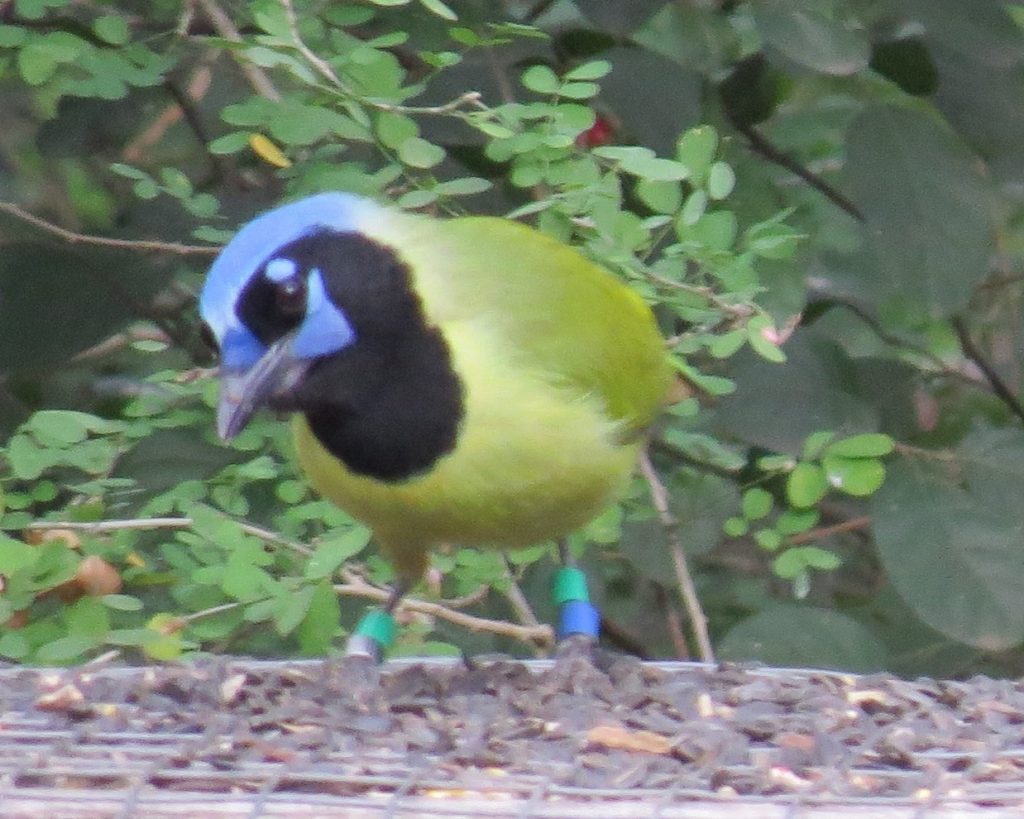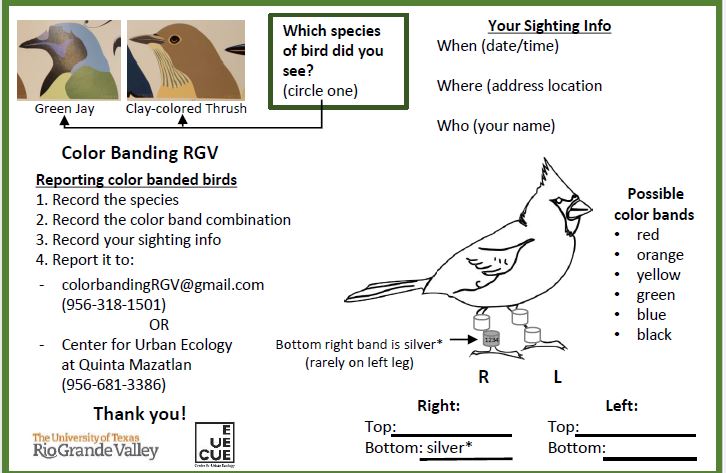
Green Jays and Clay-colored Thrushes are two tropical bird species which folks can see in the Lower Rio Grande Valley and adjacent areas of South Texas. They are part of the tropical flavor of the Valley! They are well-known to live in natural habitat, but people have been seeing them in some of our cities as well. We would like to know how they are doing in the cities—are they nesting successfully, do the same birds stay in an area, or is there a large transient population?
As many of you know, Ki and I have been doing a color-banding study of Green Jays and Clay-colored Thrushes for a few years now. Color-banding allows us to recognize individual birds, because each gets a unique combination of colored bands as well as the numbered USGS metal band (that can only be read if the bird is recaptured).
So far there seems to be a lot of movement, with thrushes occasionally spotted in different cities, and Green Jays moving generally less than a mile. Some birds “stay put” and probably nest in the same area where they were banded. Some birds are re-sighted months after they were banded, and we don’t know what they were doing in the meantime. Many birds have seemingly “disappeared” but may be quite close by. You can contribute by looking for and reporting color-banded birds. Both species seem to be doing well, but again we would like to learn how individual birds are moving around (or not!), and the more eyes looking, the better!
We have banded most of our Clay-colored Thrushes at Quinta Mazatlan, in southern McAllen, and a few near our home in Edinburg. Birds have been resighted in Mission, McAllen, Edinburg, Pharr, and Weslaco. We have banded Green Jays at our rural property north of Edinburg, near our home, and at Quinta Mazatlan. So far birds have been resighted within a mile of where they were banded. Any re-sightings of either species would be much appreciated. Even if you don’t see all the colors or which leg, partial information is valuable! Anyone is welcome to contact me at colorbandingrgv@gmail.com with any questions about the birds or the study.
Use the banding card pictured below as a guide to report your findings.
